Growing plants, especially food plants, entirely in containers rather than growing them on the grounds is known as container gardening. In gardening, a container is a compact, enclosed, and typically portable device that is used to showcase potted flowers or plants. It might be a pot, a box, a tub, a basket, a tin, a barrel, or a hanging basket. Let’s check out how to start a container garden from scratch.
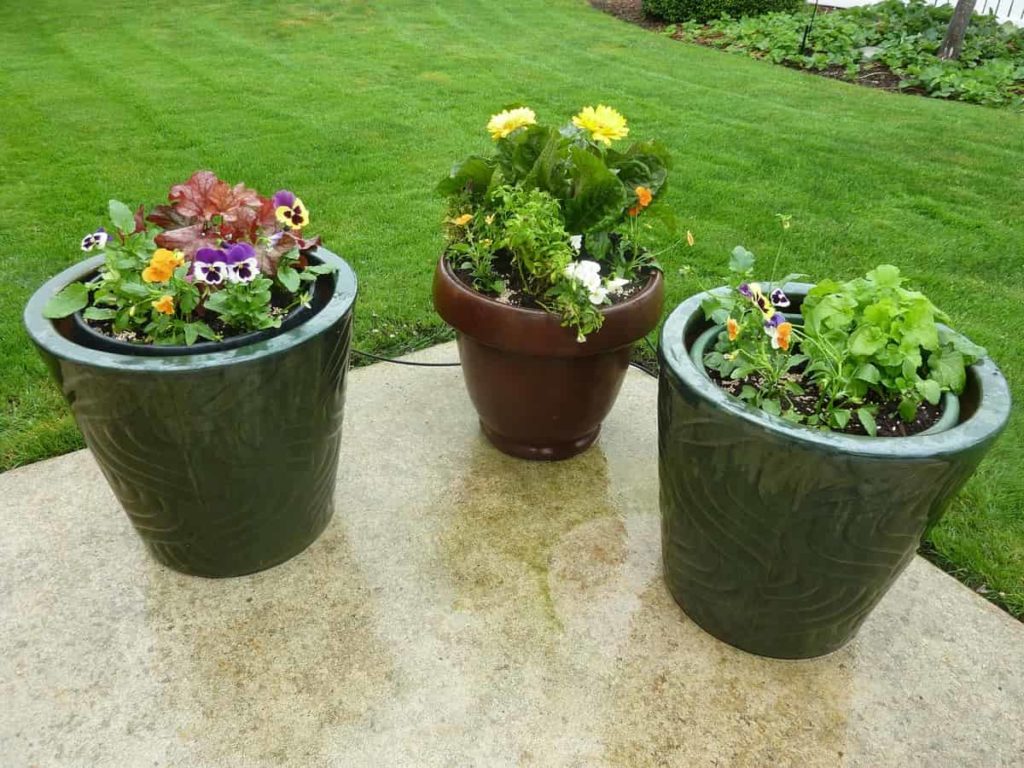
How to start a container garden from scratch
Tools required
- 2 to 4 inches of healthy soil
- Sprouts or seeds
- Light from the sun
- Water
- Hand-held cultivator for the garden
Container dimensions
Remember that growing plants in large pots is easier than in tiny ones. This is because larger pots store additional soil, which stays wet for longer and is less susceptible to temperature variations. Small hanging pots are especially vulnerable to dryness, and you may need to hydrate these twice a day just to preserve plants in hot summer temperatures. It’s also crucial to choose the plants you’ll cultivate in each pot.
Several factors influence the size and depth of the container. Consider a plant’s root size and form, and also whether it is an annual, seasonal, or shrub, and how quickly it grows. Rootbound crops, which have taken up every inch of available soil, dry out quickly and are unable to thrive. For a hybrid planting, choose a big pot or tub with ample root area for all of the plants you wish to grow.
The soil stays colder in light-colored containers than in dark-colored containers. The size of a container is determined by the amount of space available, the infrastructure that will sustain it, and whether it will be moved or not. If you want your container garden on a balcony, make sure the framework can securely support the weight.
Drainage of containers
Drainage holes are required in whatever container you pick. The soil will get soggy if drainage is not provided, and plants might die as a result. The holes do not have to be huge, but they must be large enough to allow excess water to drain. You can drill holes yourself if your container lacks holes. A cachepot is a container with no holes which are used to conceal a simple pot.
In case you miss this: Organic Vegetable Gardening in Pots/Containers
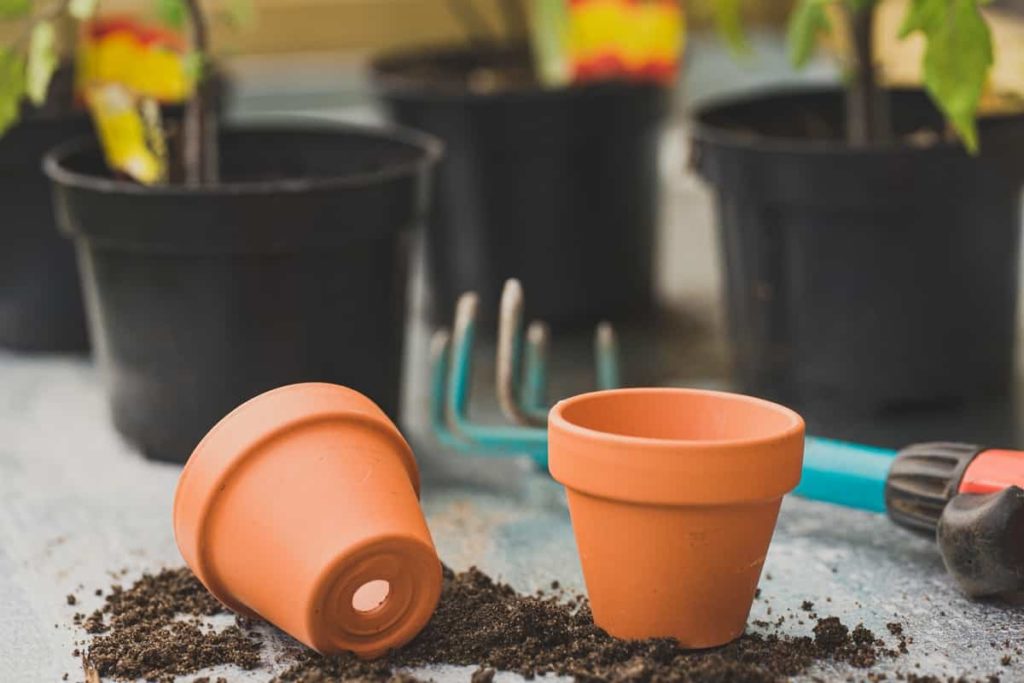
Large plants and hefty pots benefit from cachepots: Grow your plants in a nursery container that fits within a stylish cachepot so that you can transport them separately. Window boxes, hanging baskets, and self-watering double-walled containers are also available. These are a good choice for little plants that need to be watered often.
What you should look for in a Plant?
Almost everything, including many trees, can be planted in a container. However, before you dash out towards the nursery to grab whatever appeals to you, take the time to consider what you want your container garden should accomplish.
- Do you want to cultivate things like veggies or herbs?
- Do you wish to brighten up a dreary garden?
- Does your lawn require height and texture?
- Is your planting season limited and you’re seeking something which can be grown indoors?
If you’re looking for something aesthetically pleasing, search for plants that:
- They compliment and contrast one another
- Are appropriate for the container’s size
- Colours to suit your preferences
- Make a focal point
What does a plant need?
Contemplate what you can supply the plants provided your surroundings, space, and time commitment after you’ve considered what you desire. Plants, of course, require light, food, air, and water, however, the quality and amount of these requirements differ from one plant to the next.
Space
Determine the size of your plants when they reach maturity and ensure that your container can handle them. Dwarf kinds thrive in containers because they are naturally petite.
In case you miss this: DIY Container Gardening Ideas, Tips, And Techniques
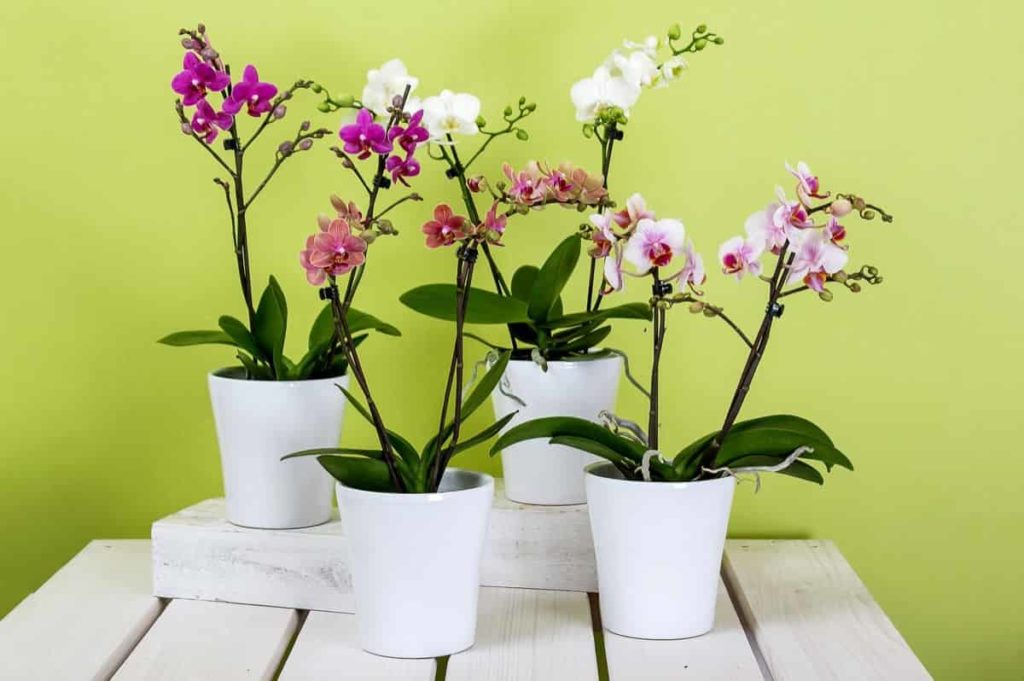
Mixture for containers
Plants in containers thrive in potting soil rather than garden soil, which compacts readily. Weed seeds, bugs, and other creatures may often be found in garden soil, which you don’t like in your containers.
Water
Hydrating plants in pots is not the same as watering plants on the soil. Pot soil is often denser when compared with garden soil and hence holds less water. Furthermore, the container limits the quantity of soil that can store water. And, since the pots are well above ground, they don’t have as much mass to keep cool.
Sunlight
Most plants require 7 to 12 hours of sunshine every day. If you don’t have that, search for types that tolerate shade, such as spinach.
Temperature
Temperatures around 55 and 75° F are ideal for plant growth. Without the insulating dirt surrounding them, container plants’ roots become hotter and colder faster than their in-ground equivalents.
Fertilizers and nutrients
Compost and worm teas manufactured from worm castings, liquid organic fertilisers, fish emulsion, and kelp meal all supply required nitrogen, phosphorus, and potassium, as well as nutrients and organic matter.
Time
You’ll need to invest some time in your containers on most days. Container gardens require your attention when it comes to watering, trimming, deadheading, and harvesting your crops.
Soil for container
It’s critical to fill your pots with high-quality soil. For your pots, do not use regular garden soil because it might not drain correctly. You may purchase potting soil from either a gardening nursery or make your own by mixing equal parts vermicompost, red soil, and organic compost.
In case you miss this: Top 20 Quick Growing Herbs In Pots/Containers
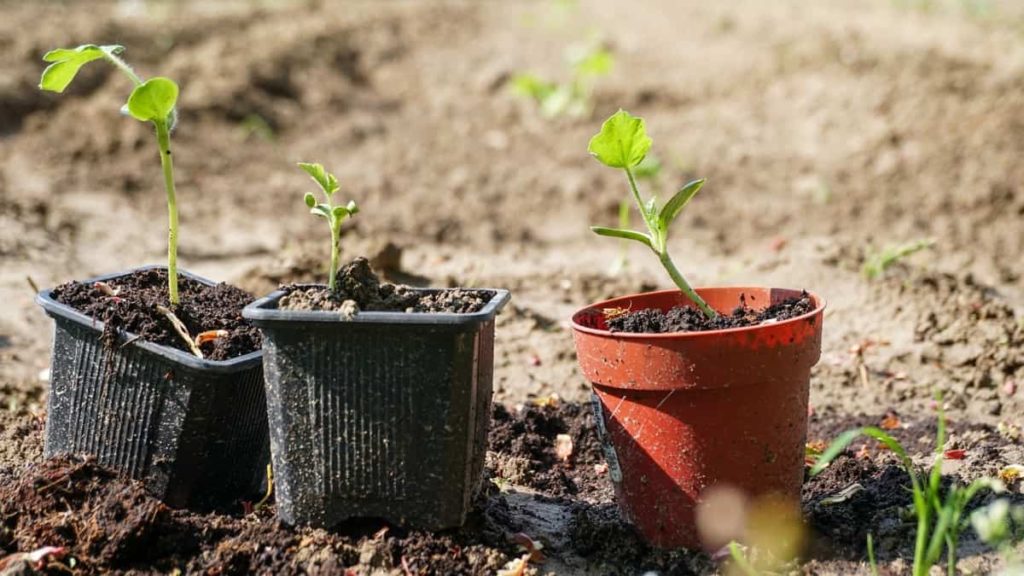
Container gardening vegetables
Choose tiny kinds and compact plants which will thrive in limited places when selecting veggies for your pots. Make sure the plant has enough days to mature in the climate. The following are some examples of plants that thrive in containers:
Carrots
Use a container that is near twice the size of the carrot type you want to grow. Carrot seeds should be planted in pots that are 18-24 inches deep.
Cucumbers
Instead of vines, choose bush variants of the plant. To cultivate one fully-grown cucumber plant, sow the seeds inside a container with a capacity of 3-5 gallons. To hold your plant while allowing air to enter through, use a trellis.
Eggplants
Sow your eggplant seeds in a 5-gallon container. When choosing a variety, keep in mind that eggplants are temperature sensitive.
Tomatoes
For spreading tomato seeds and developing one tomato plant, a 5-gallon container is ideal. Fill the container halfway with excellent potting soil and check for suitable drainage holes. Use sticks to support your plant after it begins to develop.
In case you miss this: Top 30 Quick Growing Fruits In Containers/Pots
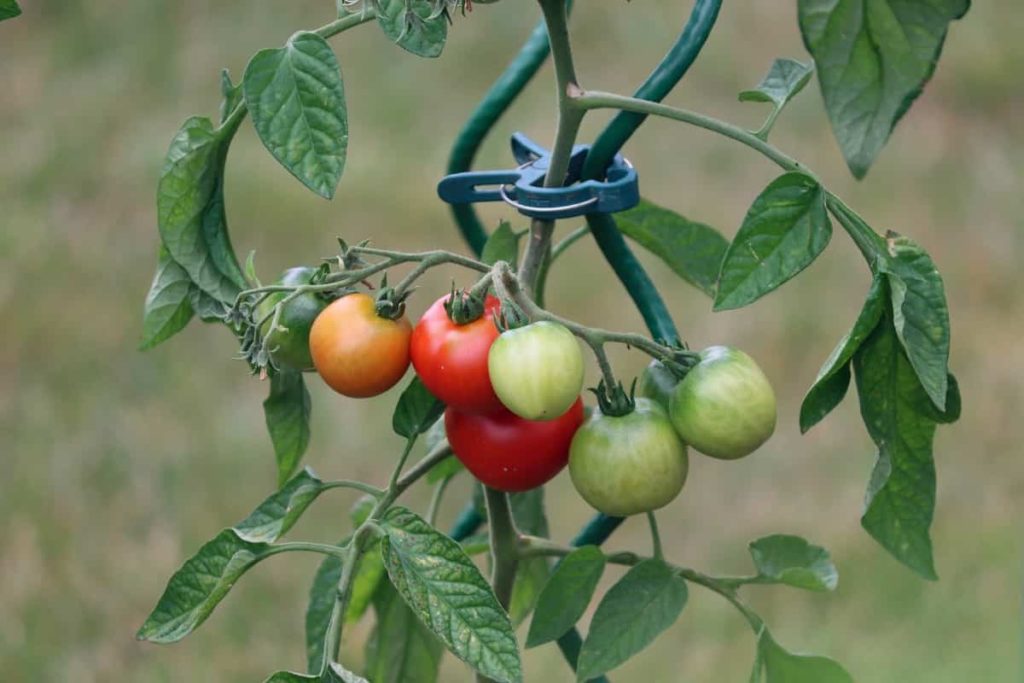
Shed window box with annuals
Opt for warm-weather annual crops that bloom all summer or have nice leaves to use in pots that will last all year. Marigolds, geraniums, scarlet sage, and blooming tobacco are all excellent choices, but garden centers and seed catalogs have plenty of others. Experiment, and if a plant fails, don’t worry about it; simply chop it down and try a different approach. Dwarf cannas and small dahlias are also good choices for big pots.
Plants should be acclimated
Many plants dislike rapid changes, and if you gradually adapt them to light changes, weather damage, water, or temperature, they will be happier in the long run. This is especially crucial for young plants and is required by most plants that have spent most of their lives in the controlled environment of a greenhouse. You should harden off your houseplants if you purchase seedlings in the spring or if you cultivate them from seed. This is a time-consuming and labor-intensive operation, however, if you don’t perform it, your plants’ chances of prospering will be drastically diminished. If you reside in a colder region and intend to overwinter your houseplants, they will also require a period of adjustment to become used to the cold.
Take care of your container garden
Now that you’ve finished your container garden, it’s time to take care of your plants. Thoroughly water your potted plants. The regularity of watering will be determined by elements such as climate, plant kind, and so on. To maintain your plants healthy, keep the soil inside the pots nourished and moist at all times. Watch out for pests and preserve your plants by sprinkling a solution of neem oil and water regularly.
In case you miss this: Urban Container Gardening In The Philippines
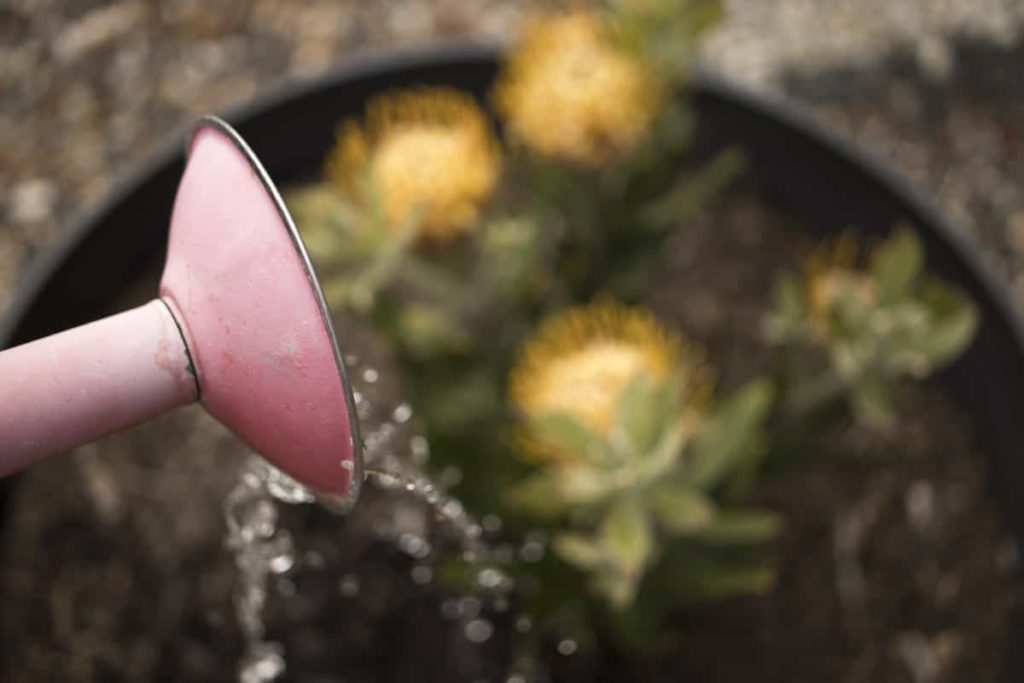
Pruning and cutting dead leaves will keep your containers appearing their best. You may also decorate your containers to enhance your pot plant more visually appealing. Whatever you choose, you will always find plants that will suit you. All it takes is a little study and experimenting to figure out what works best for your pot garden.
Frequently asked questions about container garden (FAQ)
Which plants do well in containers?
Some plants can be kept in containers all year. Plants with hardy evergreen foliage, such as yucca and variegated euonymus, as well as blooming plants, such as hebes are among them.
What can I grow in a container garden?
Lettuce, green onions, tomatoes, squash, beans, eggplant, peppers, radishes, and parsley are among the vegetables that grow well in containers. cucumbers and pole beans thrive well in this style of garden as well, although they require significantly more room due to their vining growth characteristics.
Can potted plants survive winter?
Fortunately for gardeners within mild-winter zones, container-grown plants require very little winterizing beyond relocating pots to more protected positions and sometimes covering them using frost blankets when cooler temperatures are forecast.
Disclaimer: The above analysis is only assumed (not proved) to provide great results when practiced. We are not responsible for any errors that arise on this website or from any decision or action taken as a result of using this site.
- How to Grow Hibiscus from Flower
- Plantation Ideas for Home Decoration: A Beginners Guide
- Flower Garden Designs and Layouts for Beginners
- Planting and Spacing Techniques in Papaya: A Beginner’s Guide
- Growing Gold: Essential Techniques for Planting Pineapples
- How to Make Kalanchoe Plant Bushy: Home Remedies and Solutions
- 11 Reasons Why Your Gardenia is Not Blooming: Home Remedies and Solutions
- Eco Elegance: The Guide to Designing a Drought-Tolerant Landscape
- Gardening on a Slope: Strategies for Hillside Landscaping
- Nourish and Flourish: Top Organic Mulches for Thriving House Plants
- Everything You Want to Know about Indian Mogra Flower: Discover Uses and Growing
- Green Thumb Success: Expert Tips for Cultivating Greenhouse Pumpkins All Year Round
- Maximize Growth & Flavor: The Ultimate Guide to Companion Planting in Herb Gardens
- How to Control Rhododendron Problems Naturally: Home Remedies and Organic Ways to Fix Them
- Natural Magic: The Remarkable Benefits of Cinnamon for Plants
- Best Steps to Revive Dying Tulip with Natural and Organic Treatment
- 10 Reasons Why Your Angel Trumpet is Not Blooming: Remedies and Treatment
- How to Fix Periwinkle Leaf and Flower-Related Problems: Natural Remedies and Solutions
- How to Fix Zinnias Leaf and Flower Problems: Discover Natural and Home Remedies
- Organic Steps to Induce Lemon Tree Flowers: A Comprehensive Guide
- Bloom Booster: Crafting the Perfect Homemade Bougainvillea Fertilizer
- Optimizing Growth: A Guide to Applying NPK Fertilizer for Potted Plants
- 10 Best Homemade Fertilizers for Rubber Plant: DIY Recipes and Application Method
- How to Boost Female Pumpkin Flowers: Effective Steps for More Flowers and High Yields
- Transform Your Indoor Garden: Top Benefits of Pink Salt for Houseplants
- 10 Best Homemade Fertilizers for Peacock Plants (Calathea): Easy DIY Guide
- Unlock Blooms: 9 Reasons Why Your Potted Chrysanthemum is Not Blooming
- 8 Reasons Why Your Potted Hibiscus is Not Blooming: Fix it with Simple Solutions
- Unlock Blooms: 9 Key Reasons Your Potted Frangipani Won’t Flower
- 10 Reasons Why Is My Ice Plant Not Blooming: Remedies and Treatment
- 10 Reasons Why My Potted Hydrangea Not Blooming: Treatment and Remedies
- 10 Reasons Why is My Wisteria Not Blooming: Remedies and Treatment
- 10 Reasons Why is My Goldfish Plant Not Blooming: Remedies and Treatment
- Maximize Your Space: Ultimate Guide to Balcony Gardening with Grow Bags
- 10 Reasons Why Your Iris is Not Blooming: Remedies and Treatment
- 10 Reasons Why Your Anthurium Plant is Not Blooming: Treatment and Remedies